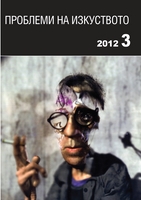Мери Уолстънкрафт Шели – „франкенщайновият комплекс” и съвременното кино
Mary Wollstonecraft Shelley, the „Frankenstein complex“ and Contemporary Film
Author(s): Tsvetomira NikolovaSubject(s): Theatre, Dance, Performing Arts
Published by: Институт за изследване на изкуствата, Българска академия на науките
Summary/Abstract: Although usually referred to as „gothic“, the novel Frankenstein, or the Modern Prometheus is no less representative of all the political, philosophical and literary trends in England from the early nineteenth century. From the perspective of the modern reader to whom the horror, fear and the gloomy gothic atmosphere of the novel seems fully recognizable and in the recent fashion, Frankenstein is more unfamiliar with its issues typical of the Industrial Age and associated with the influence of the French revolution and the ideals of romanticism. If we forget about its modern commercial sibling, this is exactly what the gothic novel is about – the horrors and fears at the dawn of the industrialization and the return to the medieval idea of the impotence and helplessness of man. This article is an attempt to trace and analyze the marks left in human civilization by Mary Shelley’s novel. The well- known writer of science fiction Isaac Asimov coined the term “Frankenstein complex” to describe the negative attitude of humanity towards androids and he put the blame on the novel for nurturing that phobia in several generations. The Frankenstein complex continues to work for some people to this day and is very similar to the hypothesis of the “uncanny valley”, developed by the Japanese roboticist Dr Masahiro Mori in 1970. The fear of „artificial people“ has changed since 1970 but what has not changed even from the times of Mary Shelley is that this fear of androids is always tied to an ongoing effort to create them, as paradoxically as it may seem. As the French philosopher Jean Baudrillard says in his article „Plastic Surgery for the Other”: „Starting with modernity, we have entered an era of production of the Other. It is no longer a question of killing, of devouring or seducing the Other, of facing him, of competing with him, of loving or hating the Other. It is first of all a matter of producing the Other. The Other is no longer an object of passion but an object of production.” Why does Mary Shelley’s novel still prevail in the cinema on the border between two digital centu- ries and how have its cinematic in- terpretations evolved through the years?
Journal: Проблеми на изкуството
- Issue Year: 2012
- Issue No: 3
- Page Range: 59-63
- Page Count: 5
- Language: Bulgarian
- Content File-PDF

